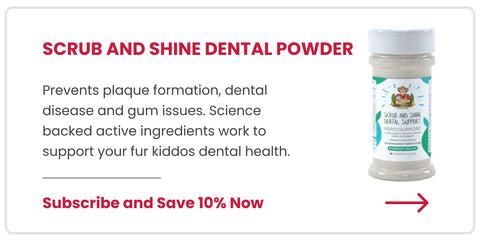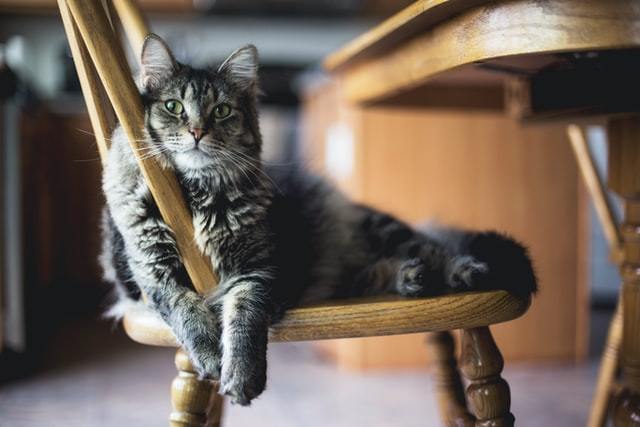Why Should You Brush Your Cat’s Teeth?
You should brush your cat’s teeth to help decrease the bacteria, plaque, and tartar formation on your cat teeth. By decreasing this buildup you are helping keep your cat healthy for many years.Cats can commonly have tartar and plaque that builds up on their teeth as they get older. This is caused by bacteria and food particles becoming trapped near the gum line in your cat’s mouth. When your cat has these bacteria in their mouth, it can lead to many other health issues such as heart failure, kidney failure, and systemic infection. Dental disease in cats can be very painful and can cause your cat to have to lose some if not all their teeth due to the infection.
Easy Steps for Brushing Cats Teeth
One way to help prevent your cat from developing dental tartar and dental disease is to brush your cat’s teeth every day. This is not something that you can just start in your cat. You will need to teach your cat to tolerate having their teeth brush. These are steps that you can follow to get your cat used to having their teeth brushed.STEP 1. Accustom Your Cat to You Touching Its Mouth
First, start with just touching your cat’s mouth. When they are sitting in your lap, put your finger in between their cheeks and teeth. This can take a few weeks for them to allow you to do. You will want to start by just touching their canine teeth, then work on them, allowing you to touch their front teeth, and finally, get them to allow you to touch their back teeth. Some cats do not mind you touching their teeth and will quickly pick up on this step.
STEP 2. Introduce the Toothbrush and Toothpaste
Once your cat is used to you touching your cat’s teeth, you can start introducing a toothbrush. There are a few different types of toothbrushes that you can use, such as:- Traditional toothbrush
- Finger toothbrush
Once they start liking the toothbrush, you can introduce them to the toothpaste. It is best to start with just a small amount for them to lick and taste. There are kinds of toothpaste that are formulated specifically for cats. DO NOT use human toothpaste as it is toxic to cats.
When looking for a toothpaste to use for your cat, look for one that is approved by the veterinary dental oral health council. These brands of toothpaste are made with non-toxic ingredients and are proven that they will help decrease tartar and plaque formation in your cat’s mouth.
STEP 3. Start Brushing
Once your cat allows the toothbrush in their mouth and has been introduced to the toothpaste, you can start brushing your cat’s teeth. At first, this process can be very time-consuming and sometimes even a fight. It is best to start with just a few teeth and slowly add on more teeth each day until your cat allows you to brush all their teeth.
How Often Should You Brush Your Cat’s Teeth?
It is best to brush your cat’s teeth every day. Just like people, cats can benefit from daily teeth brushing. While this may not be feasible for all cat owners, if you can at least brush your cat’s teeth at least once or twice a week, you can greatly decrease dental disease in your cats.

What if my cat does not tolerate Teeth Brushings?
Most cats can learn to tolerate having their teeth brushed. While this is easier to train your cat to tolerate when they are younger, older cats can also learn to tolerate this. If your cat does not tolerate this, no matter the amount of training that you have tried, there are other things that you can do to help prevent dental disease in your cat. These are some common things you can give your cat to help.- Dental Treats: Dental treats are great at getting tartar and plaque off your cat’s teeth. These treats are usually very tasty and something that you can easily give to your cat every day to help their teeth stay healthy.
- Dental Food: There are certain diets that are formulated to help keep your cat’s teeth clean. Many of these diets are hard kibbles that will help decrease the tartar formation when your cat crunches on these hard kibbles.
- Water Additives: There are things that you can add to your cat’s drinking water to help decrease tartar and plaque formation on their teeth. Some cats do not like the taste of these water additives. It is best to watch your cat, making sure that they are still drinking water, or offer them water without any additives to make sure that your cat is still drinking water. (If you want to avoid the nasty chemicals that can be found in water additives, and want a more natural holistic option... check out our Scrub and Shine dental powder)
- See your Vet: If your cat will not let you brush your cat’s teeth, it would be best for your cat to have a routine dental check by your vet. If your cat’s teeth become very infected and gums become inflamed, your vet may recommend that they have their teeth cleaned at the vet clinic. For your cat’s teeth to be cleaned at the vet clinic, they will have to be lightly sedated for them to tolerate this cleaning.
Final Thoughts
If your cat’s teeth seem like they are bothering them, it may be best for them to see your vet. Your vet may recommend a professional dental cleaning but may just recommend that you start cleaning their teeth at home. Daily dental maintenance can help decrease tartar buildup and infection, and inflammation of the gums. This can also help decrease other health issues that are caused by having infected teeth. If you are trying to train your cat to tolerate dental cleanings, follow these few tips and tricks to help keep your cat’s teeth healthy for many years.
References
http://www.vohc.org/accepted_products_cats.html
Dr. Sara Ochoa, DVM
Veterinary surgeon, LinkedinSara Ochoa, DVM graduated from St. George’s University Veterinary School in 2015. Since then, she has been at a small and exotic animal practice in Texas. In her free time, she loves making quilts and spending time with her husband Greg and their 4 fur kids. Two dogs, Ruby a schnoodle, and Bug a Japanese Chin, one cat named OJ and a leopard tortoise named Monkey.




